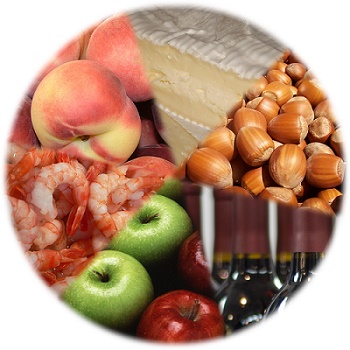Food allergies are one of the most common types of allergies for both adults and children. For instance, every 1 in 13 children suffer from food-based allergies and this rate has increased by 50% over the past few decades.
The symptoms of food allergies include but are not limited to – constant wheezing, difficulty in breathing, experiencing tightness in the throat, feeling nauseated, vomiting, having trouble in speaking, swelling of the tongue, lips or throat, getting hives and rashes, getting abdominal pains, rapid beating of the heart, experiencing severe anxiety and dizziness etc. In some cases, an allergic reaction may also make you lose consciousness or lead to a more severe condition called Anaphylaxis.
All these symptoms point to the fact that food allergy does have the potential to be life threatening and this is why, it is necessary to tackle it.
Unfortunately, there are is no medicines available for treating food allergies or to prevent it from occurring. However, food allergy testing kits are easily available, which can be effective for detecting them. This way, you can at least know that you are having an allergy because of food in particular. Along with them, you can also go for some important tips, which can help you battle food allergies and nipping them in the bud.

1. Know what is causing the allergy
The first tip is to identify the food that causes allergy. Over 120 types of food have been known for causing food allergies quite frequently and the top 8 of such food, commonly called the “Big Eight”, are known for causing 90% of food-allergic reactions in the USA! These are:
- Milk
- Peanuts
- Eggs
- Tree Nuts
- Fish
- Wheat
- Shellfish
- Soybeans
Once you identify the allergen(s), you will be able to take other steps quite easily. This takes us to the next point.
2. Take preventive measures
The old adage “prevention is better than cure” is very apt for food allergies as preventive measures can really work in curbing them to an extent. Here are some of the preventive measures that you can take:
- Read food labels before buying: The next is to remove the allergenic food from your diet. Start by reading food labels thoroughly to check whether or not they contain allergens like peanuts, eggs, soy, wheat and milk or any other food, to which you are allergic and avoid buying them/eating them.
- Nutritional counseling: If you have children who have a food allergy, then you may want to seek nutritional counseling for them.
- Continue the allergy tests: Go for If you’ve only had mild symptoms of the allergy and it hasn’t repeated itself in a long time, you still need to take food allergy tests on a regular basis.
- Improve immunity: Working on your immunity can also help you alleviate several types of allergies.
3. Emergency Medicines
There are certain medicines on the market, which when administered, can control the signs and symptoms of an allergy. Ask your physician to prescribe medications and make it a point to carry the medications with you all the time. If the medicine needs to be taken using an injection, the best idea would be to start using auto-injector trainers till you become confident of using the real thing.
4. Keep a check on stress
High levels of stress are known to make existing allergies worse. Therefore, you can target stress and work on ways to lessen its impact at the very least. Meditation is one of the most effective ways to keep your stress levels in check. Alternatively, you can also start a new hobby that helps you relieve stress and keeps allergy at bay!
5. Oral Immunotherapy
Oral immunotherapy is a method, in which the immune system is induced to tolerate the food that causes the allergic reaction. It begins with introducing the food in the system in small amounts, with the amount increasing gradually. The aim of OIT is to make the patient consume the food without any of the reactions that it used to cause earlier.
But then, what about its effectiveness?
According to Medscape, approximately 50-75% of kids with food allergies can be treated with OIT (Oral Immunotherapy) and it is believed that longer duration of OIT may result in permanent tolerance. This comes with some side effects leading to mild reactions like rashes, which decrease with an increased duration of OIT administration.
Note: OIT is always administered by a certified allergist. Never should you attempt to do it at home!
To Conclude
Food allergy may have no cure as of now, but you never know what tomorrow may bring! For now, remember and follow these tips to steer clear of any food allergy and take an informed decision.